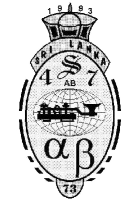6m Portable HEX Beam
Lightweight and Portable Hex Beam Design for Portable and Emergency Communications
1000+ already viewed!
Article Summary
This antenna was not designed by me unlike other antennas described in my web site. The dimensions were copied from http://www.hex-beam.com/specs/ and these dimensions are quite accurate for the 6m version. Therefore I would like to give all credit to the designers. I only did build the antenna for portable operations using my own techniques and below is how I did that…
Article Highlights
- Hex Plate Design
- Spreader Design
- Feeding the Hexbeam
- Test Results

Kamal Edirisinghe
4S7AB / KA5MAL
Author, Aug 2018
Having More than 35 years of experience in the Field of Amateur Radio, I have published many articles in prestigious international publications like, QST, CQ-DL, NCJ, Six-News etc.. Here in this web site, these write-ups are intended to give you knowledge about my designs and projects related to the hobby. The articles about foreign HAM activities are intended to share my experience.
- Full Solar Powered Radio Station
- SO2R and Multi-Multi Compatible
- Operate on All Bands/Modes/SATS
- DXCC #61,271
- IOTA AS-003, CQ-22, ITU-41
During one Emergency ham radio operation I participated in Ratnapura, Sri Lanka (2017), we have decided to operate on 40m as the main frequency. 2m was available but none of the reperaters were accessible from the communications points. Direct VHF LOS communciation was also not possible. We faced some unexpected com failures time to time on 40m due to local skip and other ionospheric conditions that were prevailing on that day…
For emergency communications, we need a reliable, dependable and uncrowded frequency to operate. The antennas should be deployed quickly and easily with minimum human resources. I think 6m fits nicely into this puzzle and this project aims at builing a 6m antenna that will be the most important component in any com link.

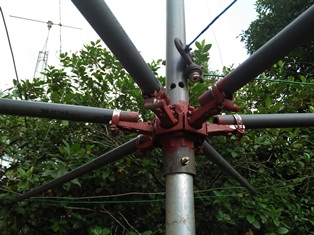
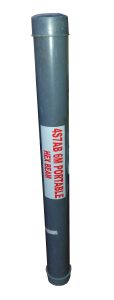
The Spreaders
Spreader selection is the msot important part of any hex beam construction. First you have to finalyze the design frequency. Thereby you can calculate the maimum spreader lengths and the material of the spreader. For the 6m design, I dicided to go with PVC water pipes. PVC pipes bend due to UV radiation and heat from the sun. But emergency /portable operations do not last for a long time for this to happen. PVC is cheaper and easily available in many sizes and shapes.
For the 6m version, the spreader is only 34″ according to calculation. But there is no harm cutting the spreader to 36″ in case you want to trim the SWR later on.
Base plate / Hex plate
In the typical hex beam construction, the desidners pay a lot of attention to this mainly because all the torque of the antenna and the weight comes to this point. But in my 6m portable hex beam, I designed it NOT to have a hex plate. Becuase this antenna is collapsible like an umbrella upside-down. The six spreders are attached to the centre pole (which is a PVC 1″) using steel pantry cupboard door hinges. They are light weight and collapses and stay tight as a bundle pressing the spreades against the centre pole. This property is ideal for a portable antenna that is planned to go inside a 4″ down pipe.
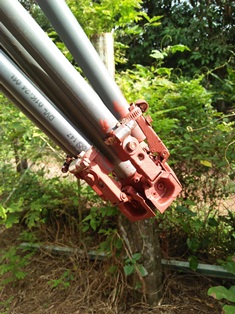

The Element set
The Element set is exactly made for the dimensions given in the above web site. They proved accurate enough for the resonance and quite acceptable SWR at 50.000 towards 53.000 Mhz well below 1.5:1. If I repeat the dimensions here, the full reflector is 110.25″ and a half driver is 57.3″. The tip spacer is 6.5″. The elements are made from insulated 5A stranded auto wire. #16 or #18 copper wire also can be used but the lenghts will be different (please refer to the above web site for details). The tip spacers were constructed using nylon fishing wire (1mm).
Feed Mechanism
When the antenna is initially fed directly using a 50 Ohms cable, the SWR was very high at 51Mhz and the signs of common mode leakage was apparant. Then the RG58 cable was coiled (6 turns on a 6″ air wound choke) at the feedpoint, the SWR came down nicely and flat.
This is the simplest and cheapest form of RF choking available. One could use a 1:1 balun that is good on 6m for the same purpose. I was reluctant to use a balun here since this antenna won’t be used as a permanent one in my antenna farm.
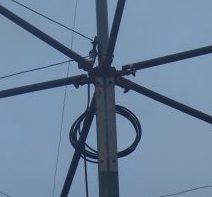
Test Results
On the air tests were done with this antenna mounted about 25ft above ground which is a reasonable height for portable operation. I have a 4 section homebrew portable mast that comes to this height when fully assembled.
The comparision A/B tests were made against a 6el yagi (SteppIR). Local ham who is 25km away from me reported no difference between the antennas to my surprise. Further we went down to 5W and he was still copying me with 5/1. This proves that this antenna is quite sucessful in handling cvommunications for 20 – 50km range. Further testing can be done in order to dimension it’s capabilities. It’s quick deployability and light weight makes it an ideal antenna for emergency/portable communications. Further, the properties of 6m band to handle communications in NLOS situations is a plus point.
